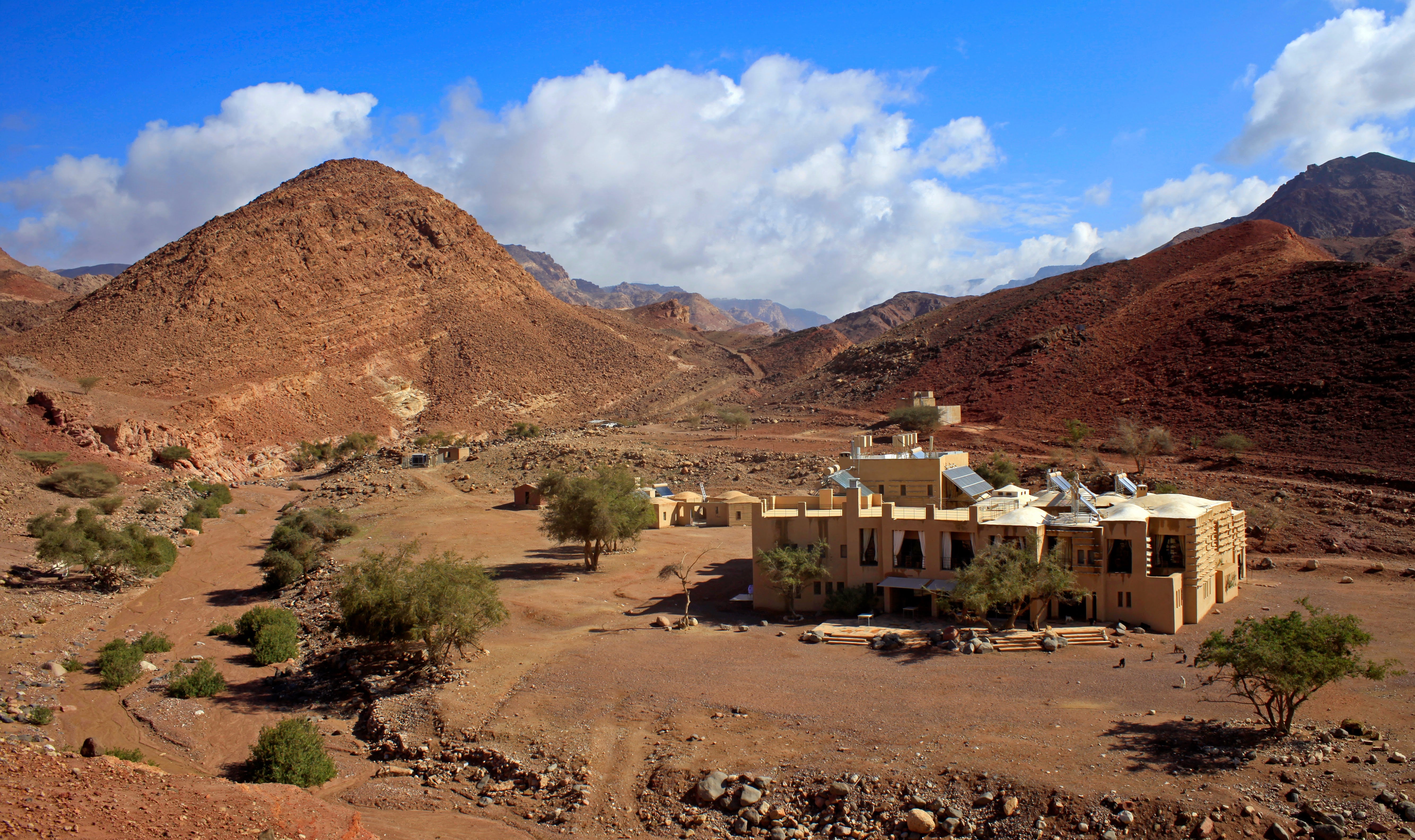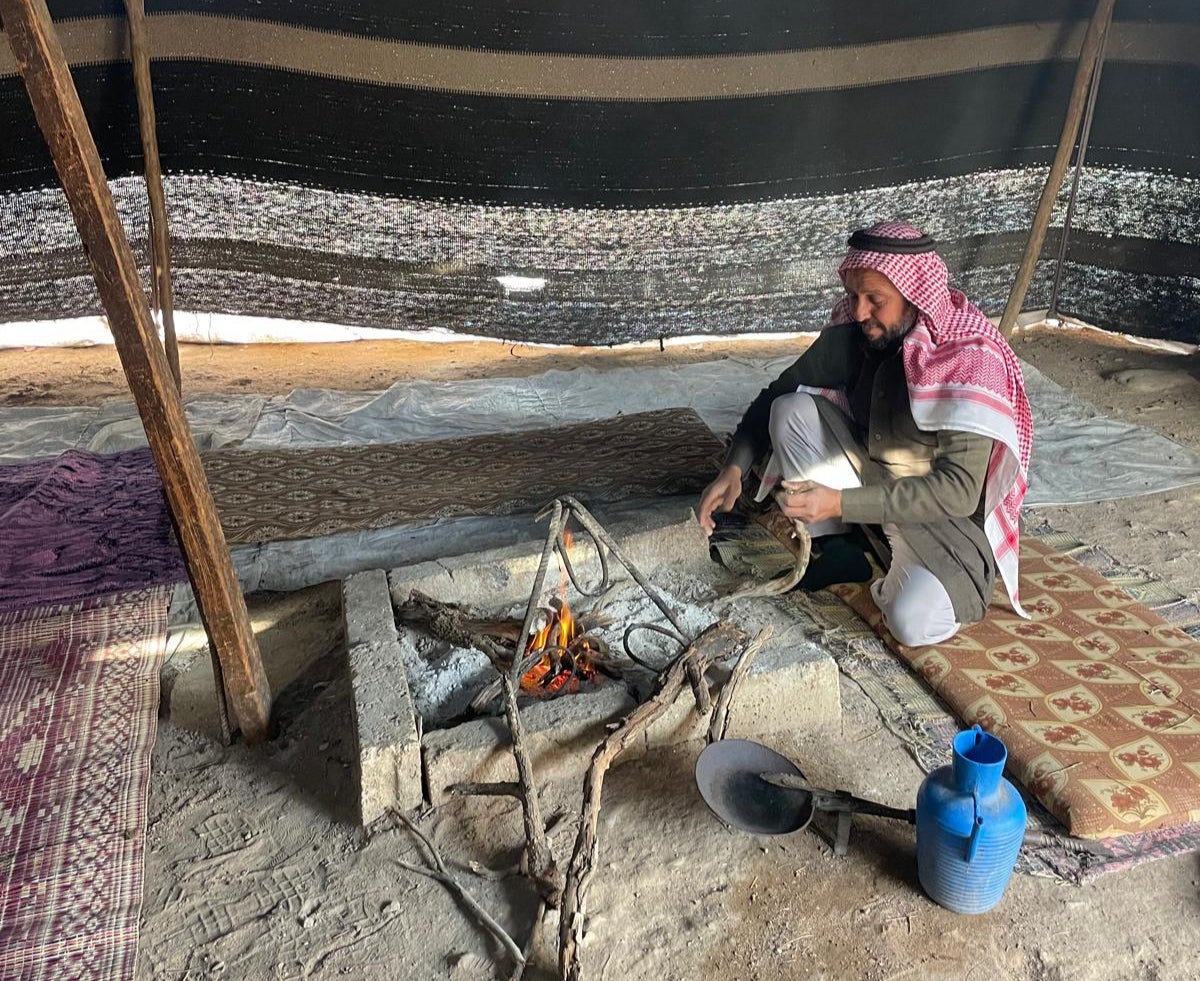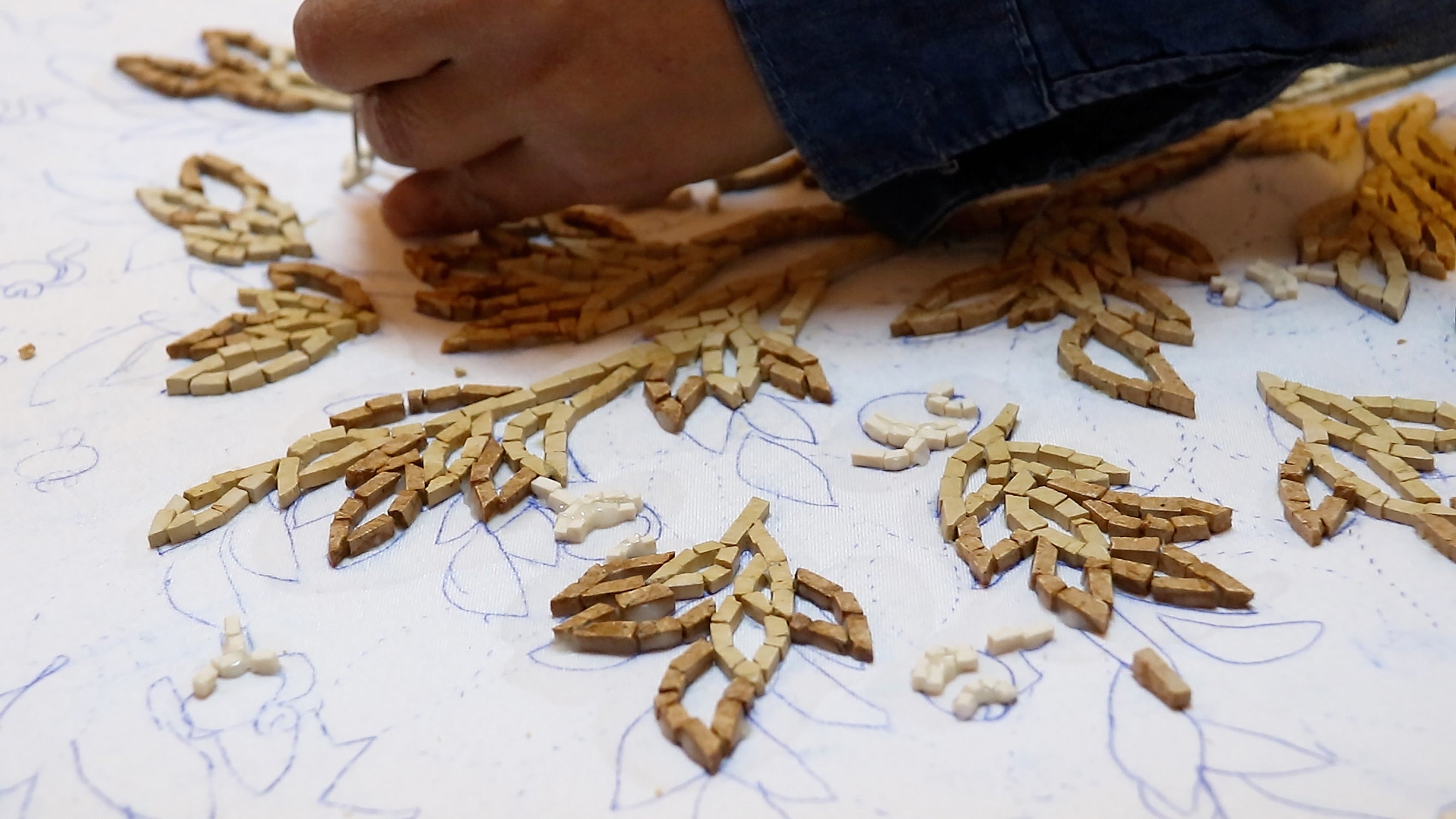Meeting local communities in Jordan – from hiking with Bedouin tribes to cooking in Petra homes
Mohammad is slowly roasting Arabic coffee beans over a fire. As he pulls the pan from the flame and begins to grind the beans by hand, another local Bedouin shepherd Ameen explains to me how the coffee is traditionally served for special occasions such as a wedding or when guests are visiting. As we sip on the bitter coffee, Mohammad’s niece and nephew gather around and we all pull hunks of bread from the slab that he has just cooked for us by covering the sand in ashes, which we dip in fresh goat’s butter.
We are in the Dana Biosphere Reserve, an area of stunning natural beauty with rugged mountains where Bedouin shepherds wander with their goats, and sweeping golden valleys dotted with springs, caves and ancient ruins.
Although Jordan is known for its stunning array of famous tourist sites – including the ancient city of Petra, the sacred site of Mount Nebo, and the natural wonder that is the Dead Sea – as we discover on our journey through the south, much of the magic of the country is to be found in the local communities we encounter on the way.

We meet Mohammad and his family during our stay at Feynan Ecolodge, an off-grid hotel situated on the southwestern edge of the Reserve where sustainability and community is at the heart of everything they do. The simple yet beautifully designed rooms fit in effortlessly with their surroundings with sandstone walls, crisp white linen and brushed wooden furniture. Most of the energy used by the lodge is generated through solar panels, and at night the entire place is lit by candles, as well as a roaring fire in the living area and, of course, a sky full of stars that guests can gaze at while lounging on the roof. It’s an enchanting escape from the hustle of everyday life.
The eco-lodge employs staff from the community and offers desert excursions led by local people like Ameen, who know the winding rocky trails by heart and can share the secrets of this ancient land. That afternoon Ameen takes me for a hike through the mountains where he shows me a handful of the roughly 800 plant species that are found in the area. This is a region known for its biodiversity, home to 449 animal species, including 25 that are endangered, such as the Sand Cat, the Syrian Wolf, the Lesser Kestrel and the Spiny Tailed Lizard. Goats from the Bedouin camps trot past as we wind up way up into the mountains past local villages, while the setting sun bathes the sandstone in a golden light.

The previous day, after a morning spent exploring the wonders of Petra, we headed to the home of Basima who was cooking two of Jordan’s most well known dishes: mansaf and maqluba. We come across these two dishes on several occasions during our travels, but here we see them cooked in the kitchen of a local family, with the skills and recipes passed down through generations. Basima’s sister Fatima explains how the lamb we were about to eat in the mansaf had already been cooked on the stove for several hours, and that in this dish all of the animal will be used, with the tender hunks of meat sitting in a bed of rice garnished with herbs, and all covered in fermented yogurt called jameed. We watch Basima tip the maqluba – which comprises chicken and rice with herbs and spices – out the pan to be served upside down. All the family and guests gather together to eat the mansaf in the traditional way, scooping the rice and meat into our mouths with our hands, and we finish the meal with sweet Hareeseh (Middle Eastern semolina cake) soaked in syrup.
Over in Madaba, we meet women who are following in the tradition of mosaic-making that has been part of the city since ancient times at the Madaba Institute for Mosaic Art and Restoration. Here, Jordanian artists are trained to create and restore mosaics, and the women we meet are happy to show us each stage of the intricate process and even let us try place a few stones ourselves.

Before we wind our way down to the Dead Sea to spend our last couple of days in one of the popular resorts that line the shore, we take a short detour away from the tourist trail to a small hotel beloved by locals. The Ma’in hot springs, that sits at 264m below sea level, surrounded by waterfalls that tumble past caves into warm pools. The most famous of these is the Hammamat Ma’in thermal spring, where the water ranges from 45C to 60C. Here, it’s calm, peaceful, and almost spiritual – set among the hills that will have changed little since ancient times and so close to the vast beauty of the Dead Sea. You can tell why Jordanians make the short trip here from the capital Amman to escape the city and bask in the mineral-rich waters to soak up the many therapeutic benefits.
Travelling across Jordan you will encounter a range of ethnicities and communities living in harmony. As we ride out on camels to watch the sunset one morning in Wadi Rum, our guide Abu Mohammad tells me he is from Sudan but now living here in the desert and taking tourists out on trails that were once trodden by the ancient Nabateans as early as 400BC, followed by Romans at the turn of the 1st century and then Umayyads in the early 7th century. The previous night we gazed at the stars with astronomers with roots in the Bedouin tribes that still wander the desert living the traditional nomadic way of life.
Even at the major tourist sites like Petra and the Dead Sea, and in the bustle of the capital city Amman, local people were keen to tell their stories and share tales of their history and culture. While you will find opportunities to mix with local communities for wherever you go, it’s also worth visiting the Travel Jordanian website where you can find curated travel experiences designed to benefit local communities and preserving Jordan’s culture and natural landscapes.
To book your own adventure, Explore Worldwide’s eight-night Jordan Discovery tour spends two full days exploring the tombs and temples of Petra, spends a night in a tented camp in Wadi Rum and discovers Jerash, Amman, the Dead Sea and the Red Sea.







Bookmark popover
Removed from bookmarks